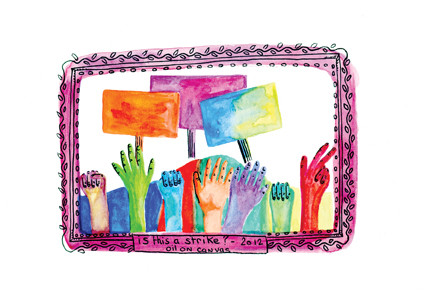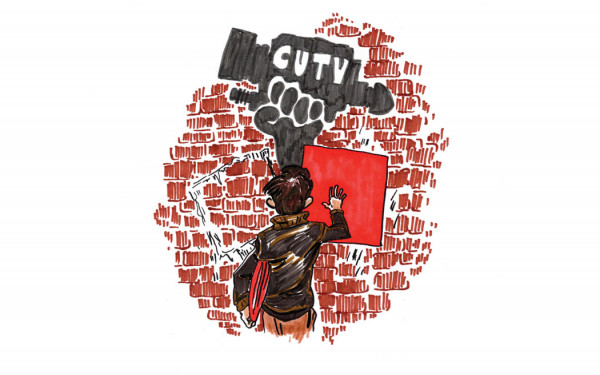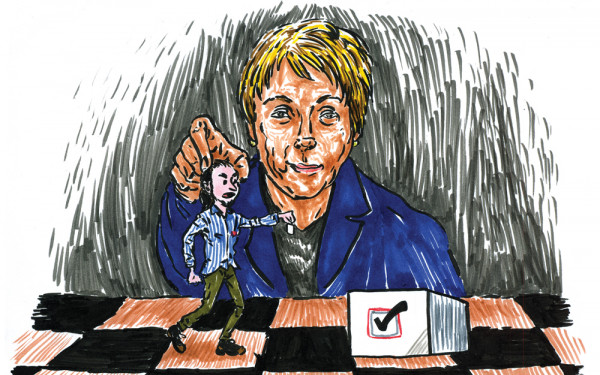Ending the ‘Boycott’
The Legal Right to Strike Isn’t a Death Sentence for Future Movements
During the 2012 student strike the word “boycott” was thrown around by those opposing it, in contrast to those who saw the legitimacy of student action and referred to it as a strike.
The language surrounding the movement was used as a way to undermine the actions of striking students, and headlines were splashed with phrases condemning the action.
The student movement born out of the planned $1,625 hike in tuition fees brought to light once again the fragility of the supposed right for students to strike in Quebec. The right to strike as it stands now is largely the result of decades of social consensus that it is an appropriate action for students to take if circumstance requires it, meaning that it is not specifically codified in the law.
This creates a dangerous situation where the right for students to strike exists in a sort of legal limbo—it’s legal because there is nothing explicitly outlawing it. Further, the injunctions some students chose to have issued when their classes were blocked show the limitations of student associations that do not have legislation specifically permitting them to strike.
Quebec student associations fall under Law 32, legislation that outlines the rights and responsibilities of students and how they are represented, but this legislation fails to include any information on the right to strike.
Similarly, the Act Respecting the Accreditation and Financing of Students’ Associations outlines the responsibilities of student associations, and includes sections that clarify that the role of an association is to promote the interests of students and represent them.
While this suggests that if students were to vote for a strike an association would be mandated to follow that directive, this act also lacks information on the right for students to strike.
The 2012 student movement saw legitimate concerns on both sides about the manner in which the general assemblies that determined whether or not an association would strike were carried out. Questions about the method of voting (a show of hands, in many cases), as well as the quorum of the assemblies, were raised by both those supporting and those against the strike.
The Quebec Labour Code specifies that a strike may only be declared provided that a secret ballot has determined by majority vote that it is what workers want. The same should go for student associations.
If the right to strike is to be defined in the legal sense, as it should be, then student associations in the province need to universally move beyond hand-raising to show support—or lack thereof—for something like a strike.
Creating a legal framework for the right to strike would likely require a majority vote in order for action to be taken, but for Concordia this would mean that close to 18,000 students would have to vote in favour of a strike.
History has shown that getting that many students to get out and vote at all, let alone for the same thing, is simply not possible.
Thus, what should instead be necessary is a majority vote by the quorum required for student government elections. In the case of Concordia, this would be 2.5 per cent of undergraduates.
While this represents a small fraction of the student population, it is also a more realistic goal that would not leave student associations crippled by legislation that makes strike action utterly impossible due to forces outside
of its control, like the continuing problem of voter apathy on campuses.
During the 2012 student movement, critics of the word “strike” pointed to the fact that, unlike paid labourers, students do not necessarily produce goods or services for the public in the same way, and as a result the word “boycott” is more appropriate for the actions of students.
Students and labourers should not necessarily be lumped together into the same category because they are not the same, and legislation outlining the right for students and workers to strike should take into consideration the intricate differences between both groups.
However, just like workers, students are vulnerable to changes and can be taken advantage of; the legal right to strike protects them from being exploited and gives them power that can be used to ensure their well-being.
Like with a union, student associations are the representatives of individuals at an institution. It is imperative that they are able to adequately advocate for accessible education, and that if there is a threat to this accessibility appropriate actions can be taken.
Creating the legal right for students to strike would not necessarily do away with those who refused to respect the decisions reached at general assemblies across the province, but it would go a long way in further legitimizing student strike actions.
Strikes are complicated and often divisive, and even with legislation granting students the legal right to strike there will still be those who refuse to recognize the democratically reached decisions of their peers.
However, by creating a set of laws defining the right to strike, one more safeguard will be put in place to ensure that students are not taken advantage of and that accessible education remains a priority.


_600_832_s.png)

01web_600_375_90_s_c1.jpg)
_600_375_90_s_c1.jpg)

